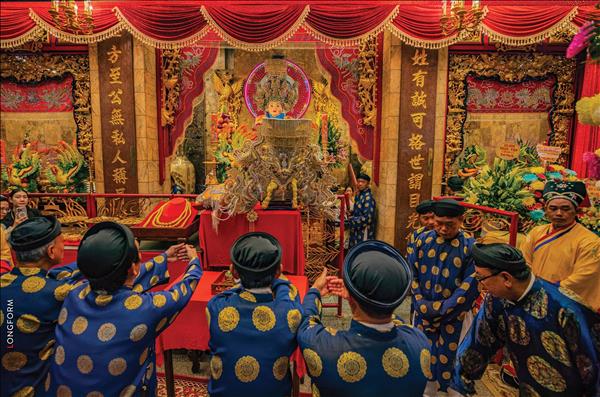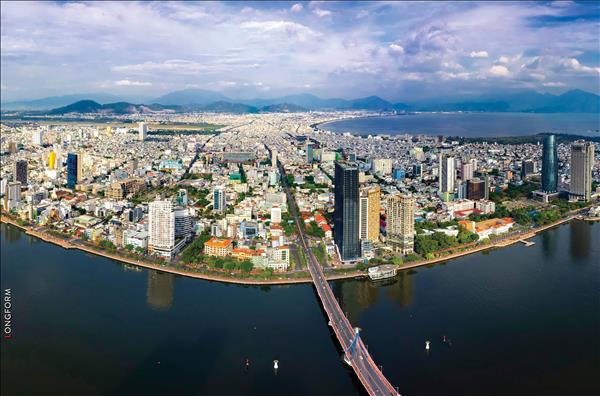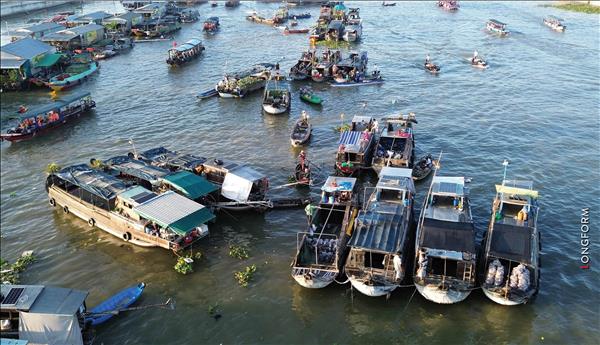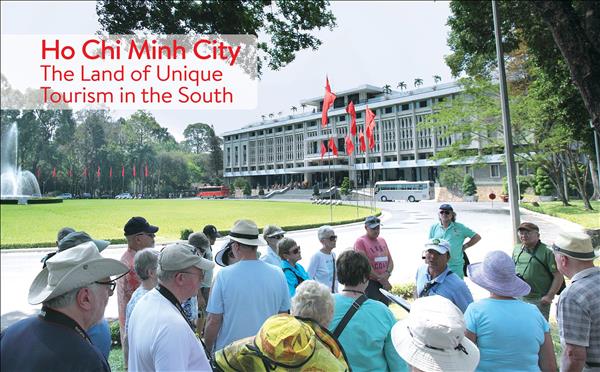City of Festivals
Once every two years, Hue organises an international festival. Since 2000, nine have been held. Many people have compared Hue Festival with other famous festivals in the world such as Festival d’Avignon of France, Edinburgh Festival of Scotland, Adelaide of Australia or Geyeongju of South Korea because of its originality and grandeur.
This year, Hue Festival was organised at the end of April to coincide with the April 30 (the Liberation of South Vietnam) and May Day holidays. It attracted a large number of domestic and foreign visitors, estimated at about one million people.
Once every two years, Hue organises an international festival. Since 2000, nine have been held. Many people have compared Hue Festival with other famous festivals in the world such as Festival d’Avignon of France, Edinburgh Festival of Scotland, Adelaide of Australia or Geyeongju of South Korea because of its originality and grandeur.
This year, Hue Festival was organised at the end of April to coincide with the April 30 (the Liberation of South Vietnam) and May Day holidays. It attracted a large number of domestic and foreign visitors, estimated at about one million people.
Despite the sweltering weather in Hue during the Festival, tens of thousands of people still flocked into various places in urban and rural centres, where traditional and contemporary arts were performed day and night.
Hue residents participate in the festival in their own way. They don’t just plunge into the frivolity but take it slow and then let out their joyfulness and party hard.
The hectic festival atmosphere seems to wake up the chronically calm Hue, the Imperial City which is used to tranquility all year round. Now, participating in carnivals are not only youngsters, but also the elderly. Perhaps, because of this, many people say the festival has created a great change in Hue culture as well as personality.
That is why in the farewell statement at the ceremony closing Hue Festival 2016, Nguyen Van Cao, Chairman of Thua Thien- Hue provincial People’s Committee, made clear his feelings, “Hue Festival 2016 aimed not only to advertise the image of the Imperial City of Hue deeply imbued with identities of national traditional culture but also to make visitors always remember the moments, which were wonderful but peaceful, new but familiar, comfortable but sentimentally warm, in the Imperial City”.
Sixteen years with nine festivals, a period not so long but also not so short, and Hue has done a lot for its development dream to gradually come true. It initially built up a Hue Festival with its own distinctive, special and charming trait, thus creating an echo in the world to advertise its image. More importantly, the Festival has breathed into Hue a new life, turning Hue from “a forbidden city”, “a city of people wishing to go to bed as early as the night falls” into “a festival city”, a city of cultural exchanges and integration.
Tourist “Holy Land”
Once every two years, Hue organises an international festival. Since 2000, nine have been held. Many people have compared Hue Festival with other famous festivals in the world such as Festival d’Avignon of France, Edinburgh Festival of Scotland, Adelaide of Australia or Geyeongju of South Korea because of its originality and grandeur.
This year, Hue Festival was organised at the end of April to coincide with the April 30 (the Liberation of South Vietnam) and May Day holidays. It attracted a large number of domestic and foreign visitors, estimated at about one million people.
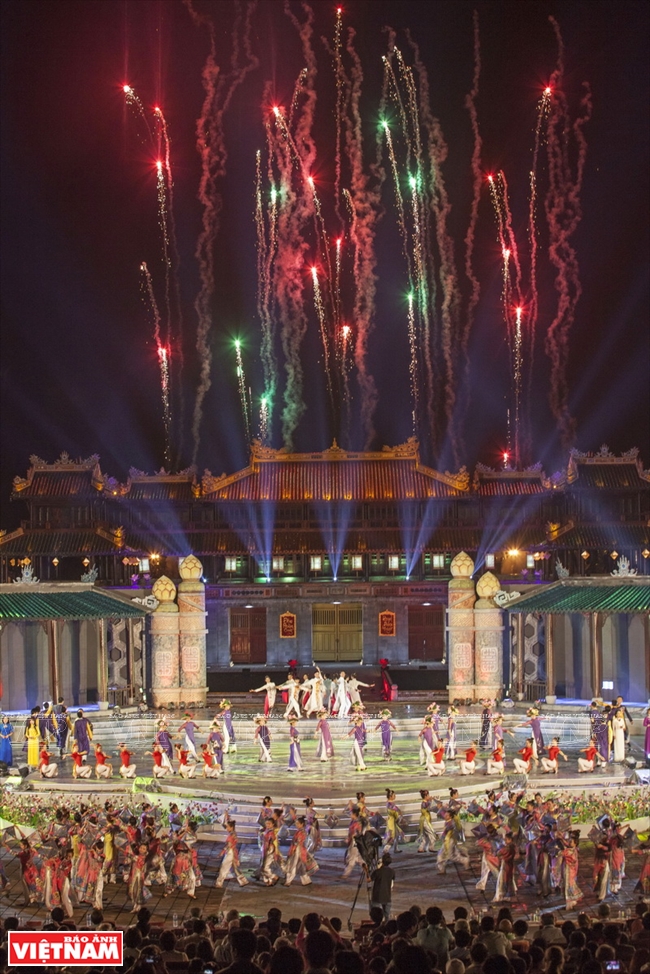 The opening ceremony of Hue Festival 2016. Photo: Tat Son/VNP 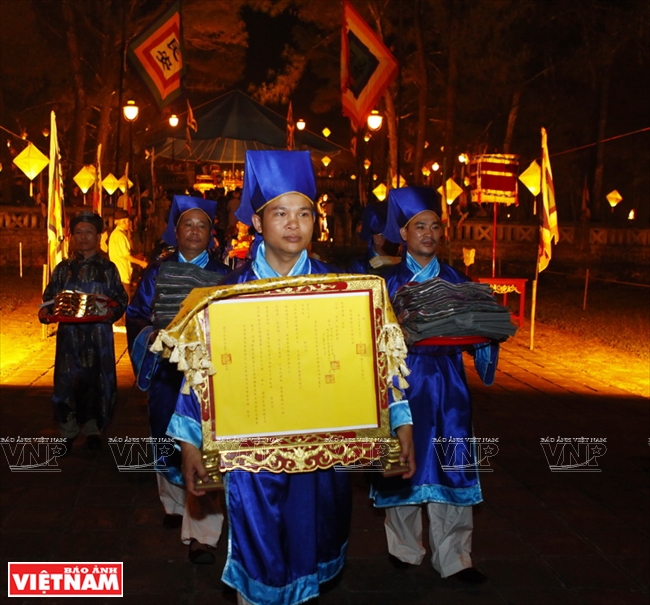 The Nam Giao Offering Ritual. Photo: Tran Thanh Giang/VNP Reintroducing the wedding ceremony of the Nguyen Dynasty’s princess at Hue Festival 2016. Photo: Tat Son/VNP The Ao dai performance at Hue Festival 2016. Photo: Tat Son/VNP The royal dance troupe from South Korea performs on a street at Hue Festival 2016. Photo: Tat Son/VNP 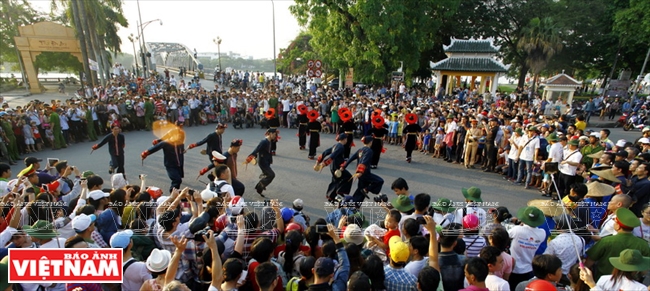 Tens of thousands of tourists and Hue residents participate in the street festival. Photo: Tran Thanh Giang/VNP 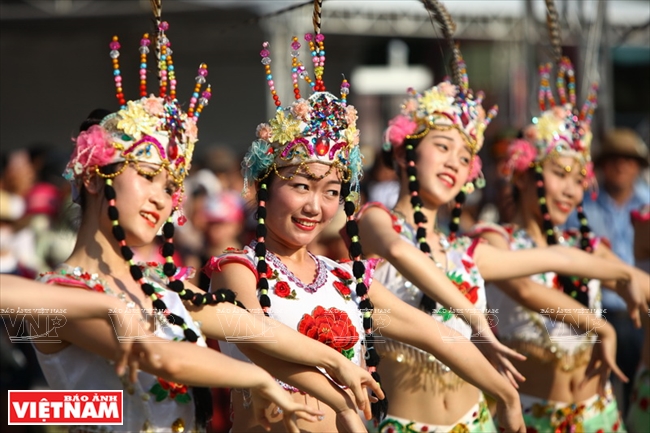 Chinese dancers from the Guangdong troupe participate in the festival for the first time. Photo: Tran Thanh Giang/VNP 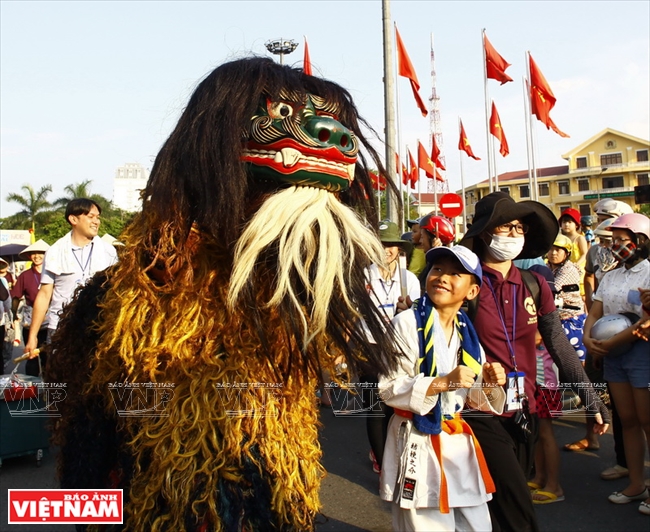 Traditional Japanese artists perform on a street at Hue Festival 2016. Photo: Tran Thanh Giang/VNP 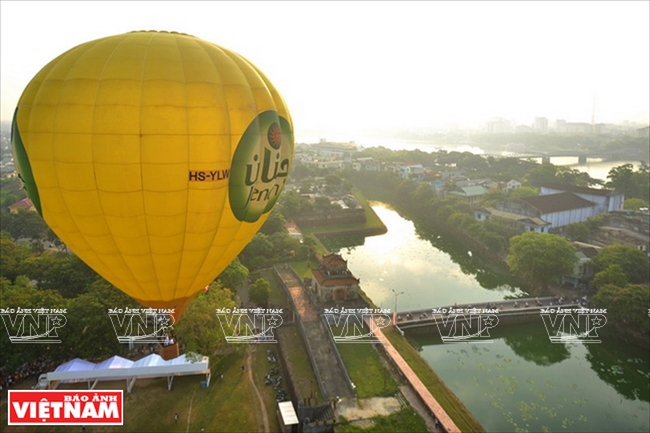 An Indian airship flies above the Complex of Hue Monuments at Hue Festival 2016. Photo: Hoang Anh |
|
“We are proud of Hue with its 710 year old history of formation and development, including 150 years as the capital city of “Dang Trong” (Southern) administration (1626-1775) and almost 160 years as the Royal City of the unified Vietnam (1788-1945). This historic and holy land full of pre-eminent figures is one of the places where exist the largest number of Vietnamese cultural heritages. We take pride in this place as the storage of many quintessential values of the Vietnamese nation, recognised by UNESCO as the common heritage of mankind”. (Deputy Prime Minister/Foreign Minister Pham Binh Minh’s statement at Hue Festival 2016 opening ceremony). |
This year, Hue Festival was organised at the end of April to coincide with the April 30 (the Liberation of South Vietnam) and May Day holidays. It attracted a large number of domestic and foreign visitors, estimated at about one million people.
Despite the sweltering weather in Hue during the Festival, tens of thousands of people still flocked into various places in urban and rural centres, where traditional and contemporary arts were performed day and night.
Hue residents participate in the festival in their own way. They don’t just plunge into the frivolity but take it slow and then let out their joyfulness and party hard.
The hectic festival atmosphere seems to wake up the chronically calm Hue, the Imperial City which is used to tranquility all year round. Now, participating in carnivals are not only youngsters, but also the elderly. Perhaps, because of this, many people say the festival has created a great change in Hue culture as well as personality.
That is why in the farewell statement at the ceremony closing Hue Festival 2016, Nguyen Van Cao, Chairman of Thua Thien- Hue provincial People’s Committee, made clear his feelings, “Hue Festival 2016 aimed not only to advertise the image of the Imperial City of Hue deeply imbued with identities of national traditional culture but also to make visitors always remember the moments, which were wonderful but peaceful, new but familiar, comfortable but sentimentally warm, in the Imperial City”.
Sixteen years with nine festivals, a period not so long but also not so short, and Hue has done a lot for its development dream to gradually come true. It initially built up a Hue Festival with its own distinctive, special and charming trait, thus creating an echo in the world to advertise its image. More importantly, the Festival has breathed into Hue a new life, turning Hue from “a forbidden city”, “a city of people wishing to go to bed as early as the night falls” into “a festival city”, a city of cultural exchanges and integration.
|
Impressive figures on Hue Festival 2016
- It took place for 6 consecutive days and nights (from April 29 to May 4, 2016) on 21 stages and performance locations throughout Thua Thien Hue Province.
- With the participation of about 1,200 professional actors and actresses from 30 art troupes of 18 countries around the world and thousands of non-professional actors and actresses. - The total of 53 art programs with 74 performances and nearly 50 other community cultural activities. - It attracted nearly 1 million people, 686 reporters from 139 domestic and foreign press agencies joining and reporting on this event. |
Tourist “Holy Land”
Hue can become a tourist “Holy Land” of Central Vietnam as it is the land of poetry, music and painting, and a place where different types of original and high-grade tourism such as discovery of imperial tombs, royal palaces, pagodas and temples, rivers, seas and islands, lagoons, forests and mountains, garden houses, and rural villages as well as different forms of distinctive traditional arts and cultures.
Unlike other localities where tours are usually organised according to seasons, Hue can organise tourist programs all the year round, with different and interesting experiences and discoveries brought to visitors every season.
In spring, Hue knows how to pamper visitors with the bright beauty of yellow apricot flowers at the royal court, the crystal gem-like bright yellow tile roofs of moss-green ancient royal buildings which are always shrouded with secrets of a distant past.
In summer, Hue turns resplendent with the colour of royal Poinciana, boisterous with Lang Co sea festival, limitless with immense Tam Giang lagoon and floating with Bach Ma mountain sky.
How romantic Hue is in the fall with falling yellow leaves and the dreamy Huong River indifferently flowing between green-grass banks.
Even in winter which hardly eases visitors due to the grey sky and bitter cold weather, Hue remains cozy with melancholic folk tunes on the Huong River, with streams of people moving to and from Dong Ba, Gia Hoi, and with delicious food making visitors feel warm when they come to lovely Hue.
| In 2010, the total number of tourists in Hue reached 1.74 million people, which rose to 3.126 million in 2015. Hue strives for 5.7 million visitors in 2020, including 2 million international arrivals. |
In spring, Hue knows how to pamper visitors with the bright beauty of yellow apricot flowers at the royal court, the crystal gem-like bright yellow tile roofs of moss-green ancient royal buildings which are always shrouded with secrets of a distant past.
In summer, Hue turns resplendent with the colour of royal Poinciana, boisterous with Lang Co sea festival, limitless with immense Tam Giang lagoon and floating with Bach Ma mountain sky.
How romantic Hue is in the fall with falling yellow leaves and the dreamy Huong River indifferently flowing between green-grass banks.
Even in winter which hardly eases visitors due to the grey sky and bitter cold weather, Hue remains cozy with melancholic folk tunes on the Huong River, with streams of people moving to and from Dong Ba, Gia Hoi, and with delicious food making visitors feel warm when they come to lovely Hue.
|
Tourists visit the royal tomb of King Khai Dinh . Photo: Nguyen Thang/VNP The royal tomb of King Khai Dinh is a classic example of ceramic-based architecture in Hue. Photo: Tran Thanh Giang/VNP 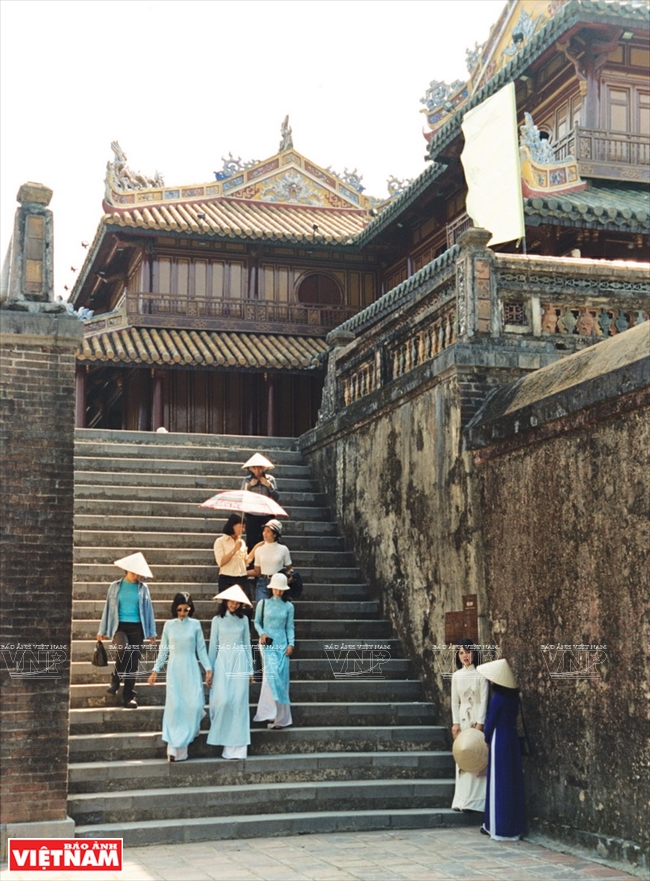 Tourists visit the Imperial City of Hue. Photo: Nguyen Thang/VNP Tourists visit the Minh Lau Pavilion (Pavilion of Light) at the royal tomb of King Minh Mang. Photo: Tat Son/VNP The area displaying nine dynastic urns - national precious objects of Vietnam. Photo: Nguyen Thang/VNP Thien Mu Pagoda built in 1601 near the Huong River is a must-see destination for visitors in Hue. Photo: Nguyen Thang/VNP Foreign tourists learn about instruments of Hue Court Music. Photo: Tran Thanh Giang/VNP Foreign tourists go to a rural market held at the Thanh Toan Tile-Roofed Bridge. Photo: Thanh Giang/VNP 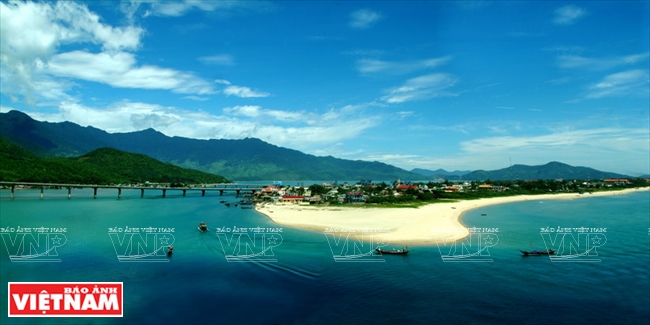 Lang Co Beach in Hue. Photo: VNP’s file The Imperial City of Hue welcomes thousands of visitors every year. Photo: Tat Son/VNP |
All these leave deep impressions on visitors when they have the chance to come to Hue, thus making Hue an inevitable stop-over in their itineraries to discover the hidden charm of Vietnam.
Hue is endowed by nature and history with a perfect treasure of landscapes and heritages, thanks to which Hue’s tourism has constantly developed, and is the backbone of the local economy. Since the Complex of Hue Monuments was recognised by UNESCO as a world heritage, the local tourist turnover has markedly increased, accounting for 56-57% of the province’s GDP. In 2010, it reached 1,338 billion dong, which rose to 3,000 billion dong in 2015.
Those figures reveal that tourism promises to be the mainstay for Hue to advance forwards. However, Hue’s tourist development has not yet corresponded to its existing potential. This requires breakthrough strategies and people who dare to make things happen.
Hue has started the game with great plans and determination, including the investment of around 9,000 billion dong to build Hue into a green city of Vietnam, turning it into an international tourist destination, with the restructuring of the local tourist sector, and the accelerated activities of promoting and calling for investment in tourism.
These steps are truly necessary to turn Hue into the tourist “Holy Land” of Central Vietnam as Nguyen Van Cao, Chairman of Thua Thien-Hue provincial People’s Committee, confided. Hue longs for suggestions to help tourism develop in correspondence to its potentials and position.
Hue is endowed by nature and history with a perfect treasure of landscapes and heritages, thanks to which Hue’s tourism has constantly developed, and is the backbone of the local economy. Since the Complex of Hue Monuments was recognised by UNESCO as a world heritage, the local tourist turnover has markedly increased, accounting for 56-57% of the province’s GDP. In 2010, it reached 1,338 billion dong, which rose to 3,000 billion dong in 2015.
Those figures reveal that tourism promises to be the mainstay for Hue to advance forwards. However, Hue’s tourist development has not yet corresponded to its existing potential. This requires breakthrough strategies and people who dare to make things happen.
Hue has started the game with great plans and determination, including the investment of around 9,000 billion dong to build Hue into a green city of Vietnam, turning it into an international tourist destination, with the restructuring of the local tourist sector, and the accelerated activities of promoting and calling for investment in tourism.
These steps are truly necessary to turn Hue into the tourist “Holy Land” of Central Vietnam as Nguyen Van Cao, Chairman of Thua Thien-Hue provincial People’s Committee, confided. Hue longs for suggestions to help tourism develop in correspondence to its potentials and position.
|
|
Story: Thanh Hoa
Photos: Nguyen Thang, Tat Son, Thanh Giang & VNP’s files
Photos: Nguyen Thang, Tat Son, Thanh Giang & VNP’s files

